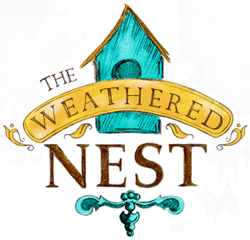Nesting Info
 When scouting for a suitable nesting spot, birds are not that much different than people. The house needs to meet certain specs and criteria to accommodate a growing family. But most importantly, it needs to be in a desirable location. Predator invasion is probably the single biggest concern for scouting nesters. If you've ever had the opportunity to watch a bird scout a nesting spot, they will spend days at a time observing the area before they determine whether or not it's suitable. Just like people, they'll check it over tip to stern before they bring their mate over to give her seal of approval. They're planning on raising a family and, for most species, safety comes first.
When scouting for a suitable nesting spot, birds are not that much different than people. The house needs to meet certain specs and criteria to accommodate a growing family. But most importantly, it needs to be in a desirable location. Predator invasion is probably the single biggest concern for scouting nesters. If you've ever had the opportunity to watch a bird scout a nesting spot, they will spend days at a time observing the area before they determine whether or not it's suitable. Just like people, they'll check it over tip to stern before they bring their mate over to give her seal of approval. They're planning on raising a family and, for most species, safety comes first.
While some of the more common predators are cats, squirrels, raccoons and crows, one of the most destructive and persistent is a snake. A snake is a silent predator and rarely gives warning. In a split second it is capable of devouring an entire family and no one escapes. So, if you want to attract nesters, there are some important factors to consider before choosing where to put your new bird house.
First of all, I would like to add that all of my bird houses are built with predator invasion in mind. You will note that most of them have deep entrance ways providing a greater reach for squirrels, crows and even cats. Furthermore, the entrance holes are secured with a sturdy metal ring to deter the chewing critters. My most indestructible line is my recycled paint can houses but, even as solid as they are, they are not snake proof if placed in the wrong location.
The most common mistake is thinking a tree is a good place to hang or install a bird house. In most cases it can be but keep these three things in mind. Pick a tree in a populated area, hang the bird house on a sturdy enough branch to adequately support the weight of the birdhouse but at a safe distance from the trunk , and hang it at least eight feet off the ground. Snakes are notorious for channeling on to branches to find their prey but if the branch will not support its weight it will eventually abort the mission.
In the case of attracting blue birds, it doesn't matter if the house is built to spec or not. Blue birds are territorial and prefer privacy. So choose a fairly open spot in an area without a lot of other bird traffic. Post mount is most desirable for attracting bluebirds but make certain that the entrance hole is at least 6 feet off the ground. If you mount it to an existing fence post, you may want to add a 2 X 4 to give it a little extra height. Make sure that your location is in a manicured area of your yard as snakes love high grasses and they can scale a post in no time. You can research on line how to make a snake baffle but I personally have had success by attaching some pond netting around the base of the post about a foot off the ground and letting it “puddle” loosely on the ground about a foot outside the perimeter. Inevitably the snake gets tangled in the netting and can not get out… or “in” for that matter.
As for the martin houses, it is best to research everything there is to know about purple martins before you buy one. Attracting the purple martin takes a lot of patience, and any diehard martin enthusiast will tell you it's a labor of love. Location is certainly critical. Martins are exceptionally picky about the proximity of trees, tall shrubs and open areas. These are fascinating creatures and people-friendly but require regular maintenance and attention during nesting season if you want them to stick around. If you're successful in attracting them, the purple martin and the blue bird both will return to the same nesting site year after year.
